Bradford Campbell
Performance Evaluation of Real-Time Object Detection for Electric Scooters
May 05, 2024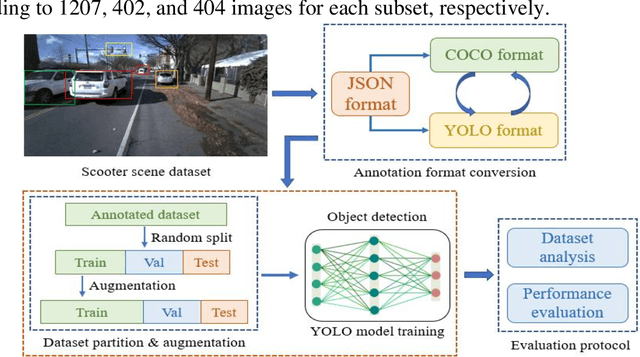
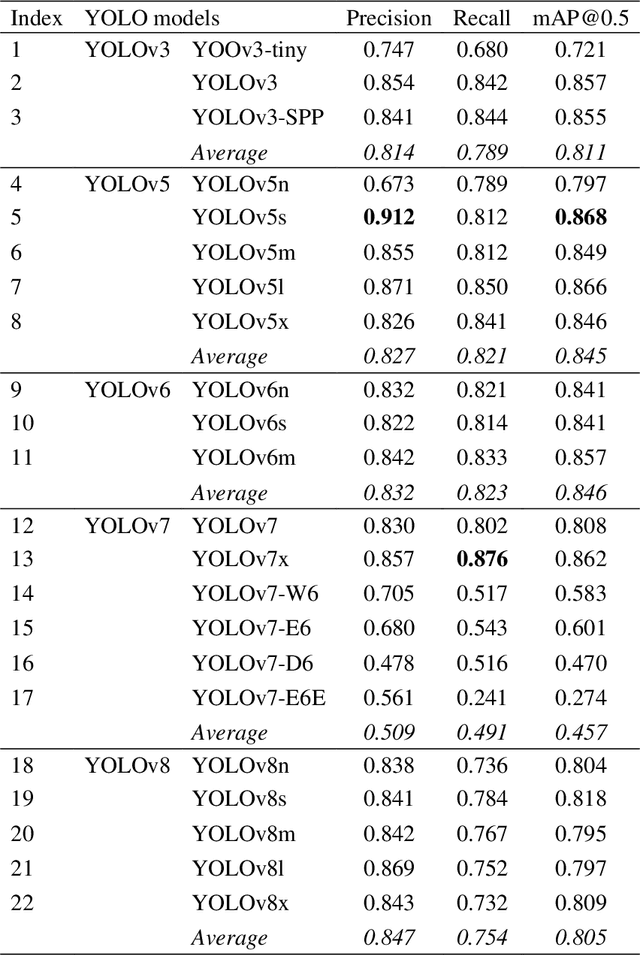
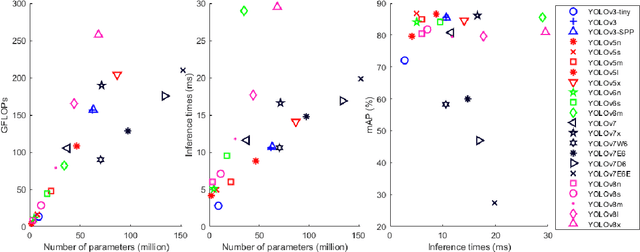
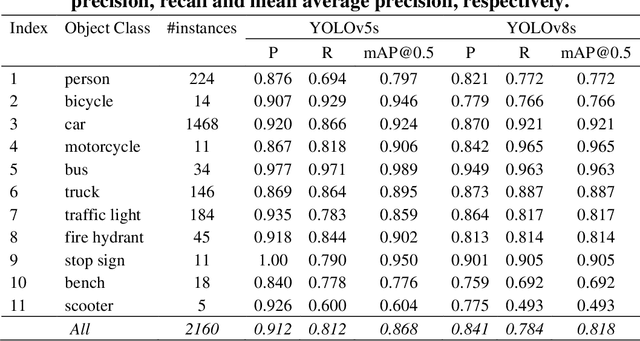
Abstract:Electric scooters (e-scooters) have rapidly emerged as a popular mode of transportation in urban areas, yet they pose significant safety challenges. In the United States, the rise of e-scooters has been marked by a concerning increase in related injuries and fatalities. Recently, while deep-learning object detection holds paramount significance in autonomous vehicles to avoid potential collisions, its application in the context of e-scooters remains relatively unexplored. This paper addresses this gap by assessing the effectiveness and efficiency of cutting-edge object detectors designed for e-scooters. To achieve this, the first comprehensive benchmark involving 22 state-of-the-art YOLO object detectors, including five versions (YOLOv3, YOLOv5, YOLOv6, YOLOv7, and YOLOv8), has been established for real-time traffic object detection using a self-collected dataset featuring e-scooters. The detection accuracy, measured in terms of mAP@0.5, ranges from 27.4% (YOLOv7-E6E) to 86.8% (YOLOv5s). All YOLO models, particularly YOLOv3-tiny, have displayed promising potential for real-time object detection in the context of e-scooters. Both the traffic scene dataset (https://zenodo.org/records/10578641) and software program codes (https://github.com/DongChen06/ScooterDet) for model benchmarking in this study are publicly available, which will not only improve e-scooter safety with advanced object detection but also lay the groundwork for tailored solutions, promising a safer and more sustainable urban micromobility landscape.
Building Performance Simulations Can Inform IoT Privacy Leaks in Buildings
Mar 26, 2023Abstract:As IoT devices become cheaper, smaller, and more ubiquitously deployed, they can reveal more information than their intended design and threaten user privacy. Indoor Environmental Quality (IEQ) sensors previously installed for energy savings and indoor health monitoring have emerged as an avenue to infer sensitive occupant information. For example, light sensors are a known conduit for inspecting room occupancy status with motion-sensitive lights. Light signals can also infer sensitive data such as occupant identity and digital screen information. To limit sensor overreach, we explore the selection of sensor placements as a methodology. Specifically, in this proof-of-concept exploration, we demonstrate the potential of physics-based simulation models to quantify the minimal number of positions necessary to capture sensitive inferences. We show how a single well-placed sensor can be sufficient in specific building contexts to holistically capture its environmental states and how additional well-placed sensors can contribute to more granular inferences. We contribute a device-agnostic and building-adaptive workflow to respectfully capture inferable occupant activity and elaborate on the implications of incorporating building simulations into sensing schemes in the real world.
Graph Neural Networks in IoT: A Survey
Mar 31, 2022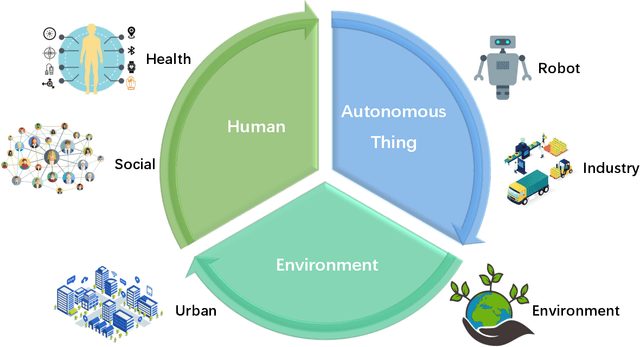
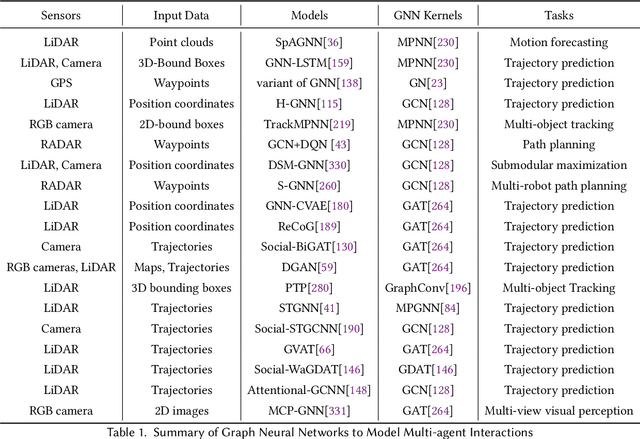

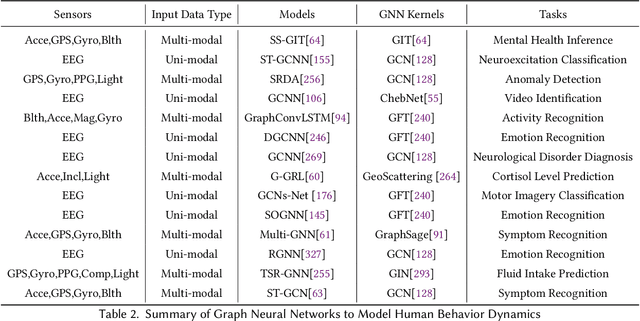
Abstract:The Internet of Things (IoT) boom has revolutionized almost every corner of people's daily lives: healthcare, home, transportation, manufacturing, supply chain, and so on. With the recent development of sensor and communication technologies, IoT devices including smart wearables, cameras, smartwatches, and autonomous vehicles can accurately measure and perceive their surrounding environment. Continuous sensing generates massive amounts of data and presents challenges for machine learning. Deep learning models (e.g., convolution neural networks and recurrent neural networks) have been extensively employed in solving IoT tasks by learning patterns from multi-modal sensory data. Graph Neural Networks (GNNs), an emerging and fast-growing family of neural network models, can capture complex interactions within sensor topology and have been demonstrated to achieve state-of-the-art results in numerous IoT learning tasks. In this survey, we present a comprehensive review of recent advances in the application of GNNs to the IoT field, including a deep dive analysis of GNN design in various IoT sensing environments, an overarching list of public data and source code from the collected publications, and future research directions. To keep track of newly published works, we collect representative papers and their open-source implementations and create a Github repository at https://github.com/GuiminDong/GNN4IoT.
 Add to Chrome
Add to Chrome Add to Firefox
Add to Firefox Add to Edge
Add to Edge